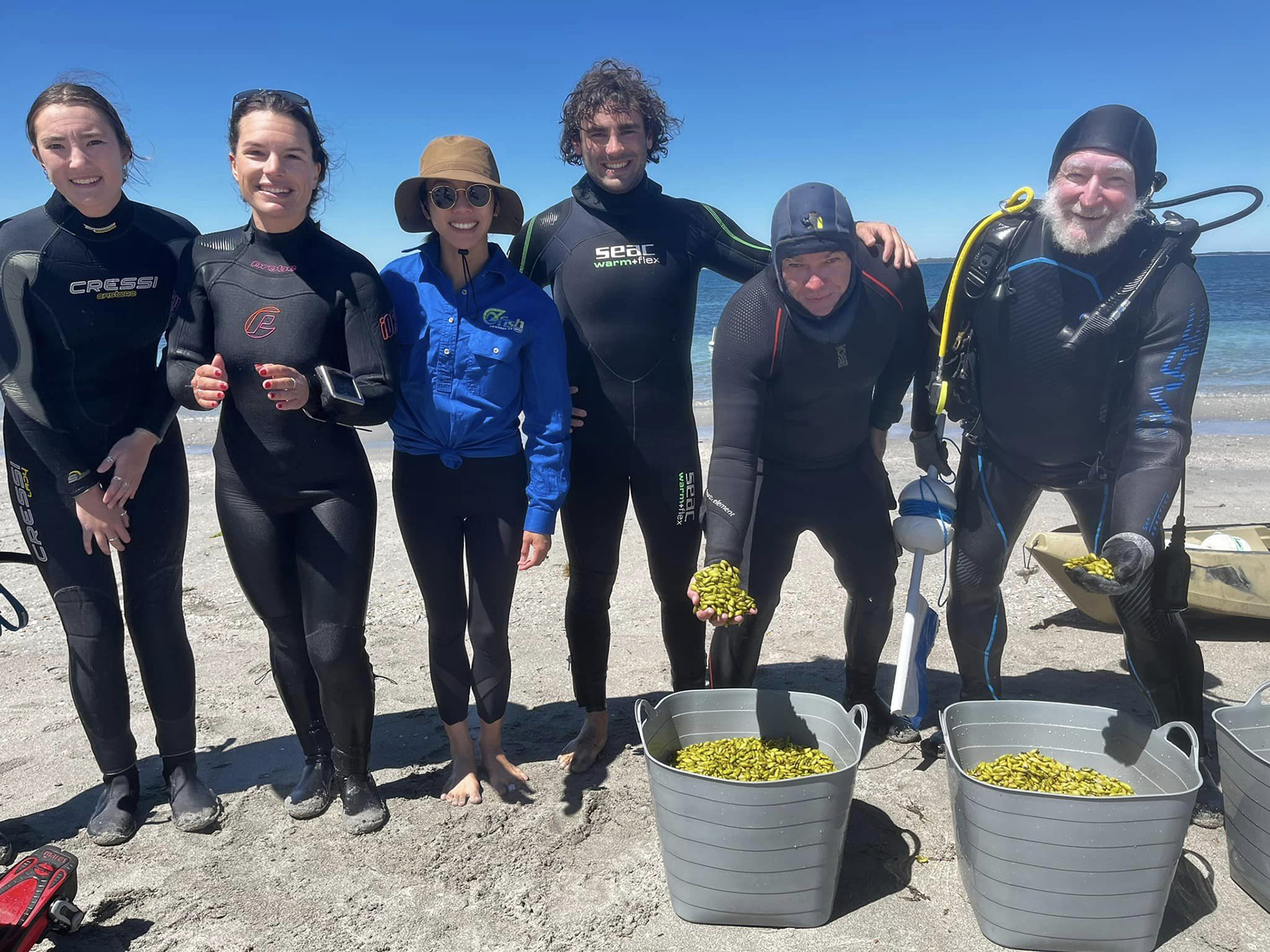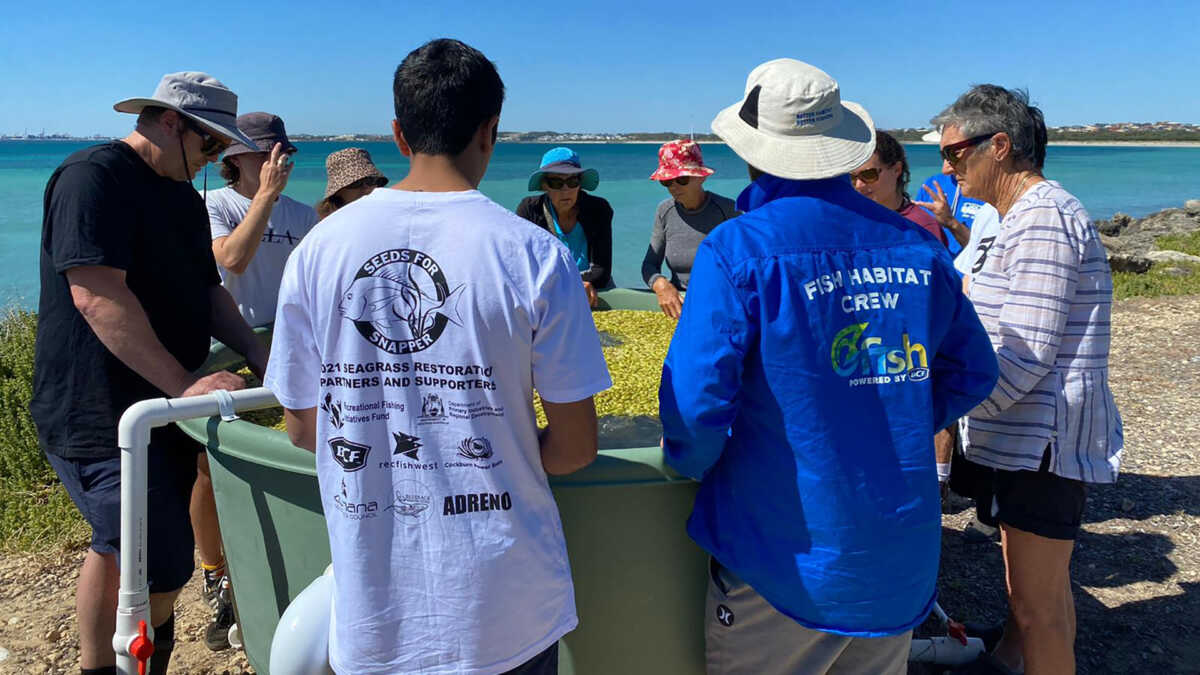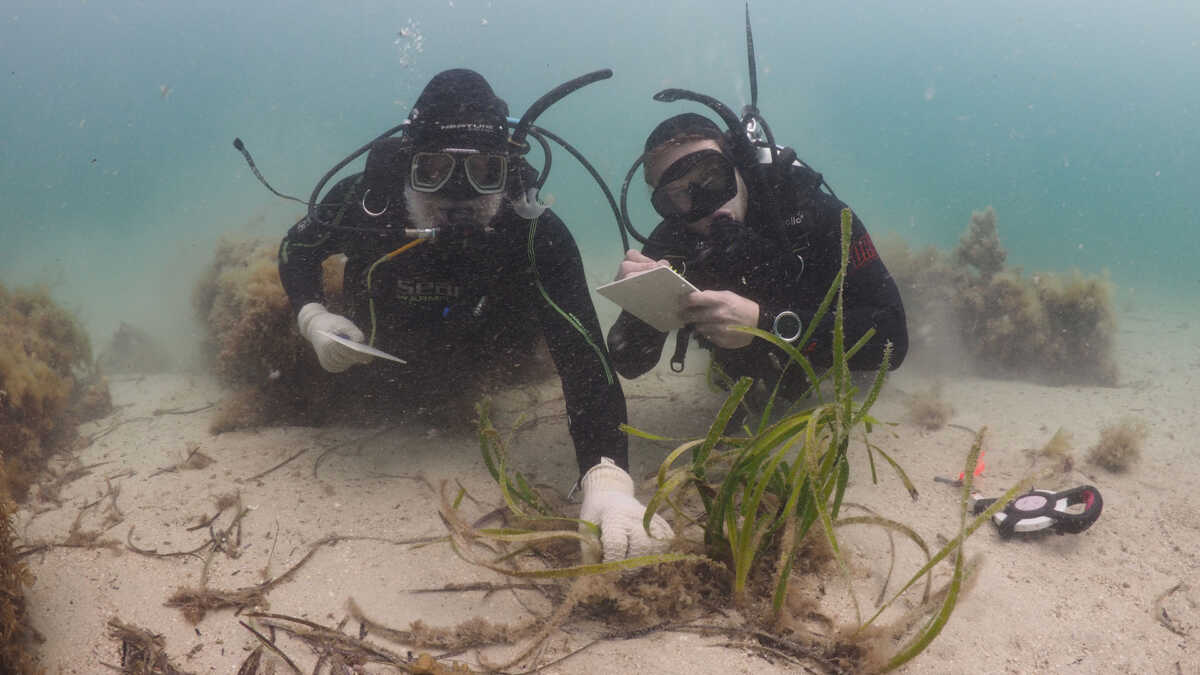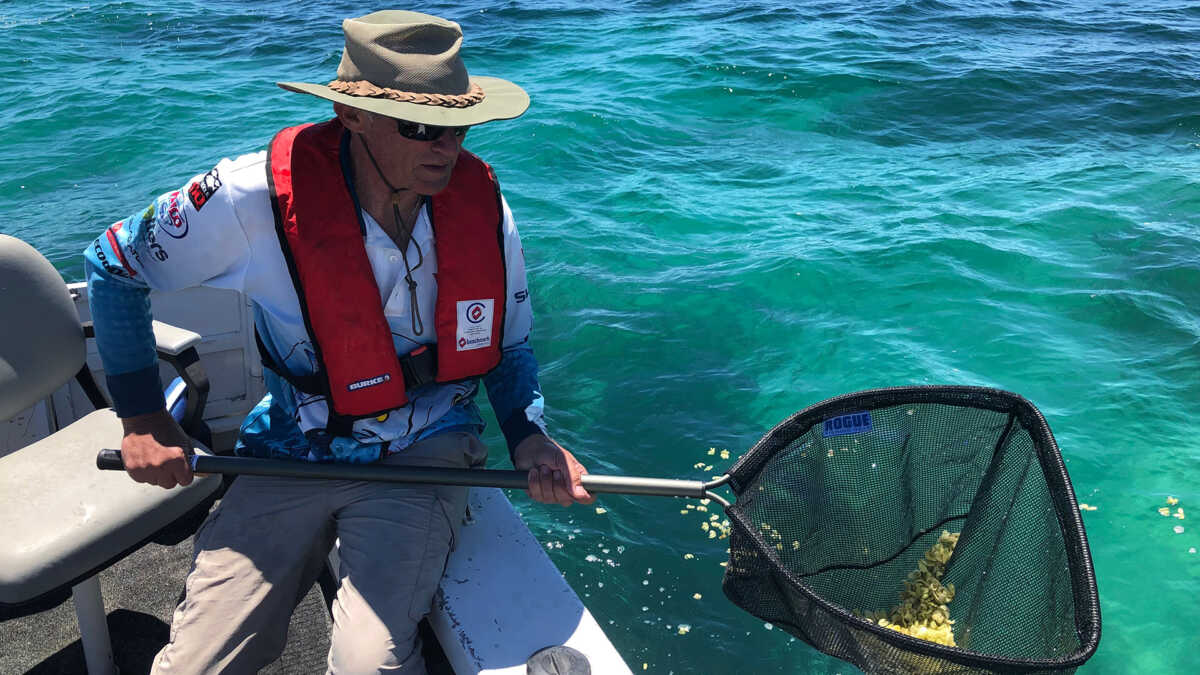Seeds for Snapper makes strong start for 2022 in WA

‘Seeds for Snapper’ – the largest seagrass restoration initiative in Australia has got off to a strong start for its fifth year in Cockburn Sound, Western Australia.
It only got underway last week but an army of volunteer recreational anglers along with our University of Western Australia crew have already collected more than 400,000 seagrass fruits. Unlike other restoration approaches, Seeds for Snapper mobilises recreational fishers and the wider community to help restore their own backyard.
The fruits harvested so far by OzFish volunteers are being matured and processed in large onshore specialist tanks. The first of the seeds collected from those fruits will soon be dispersed at strategic locations, selected for seagrass restoration.
We’re aiming to disperse more than one million seeds this year, making 2022 the biggest year yet for seagrass restoration in Cockburn Sound. Seagrass meadows are a vital habitat for pink snapper – a species popular with recreational fishers in Western Australia.
Local people keen to get involved and help achieve the one million target can still do so through a variety of roles. We’re looking for boat netters, qualified scuba and free divers, shore crew, and seagrass seed dispersal crew.
Steve Pursell, OzFsh Program Manager for Western Australia, welcomed the level of community involvement so far and urged people not to miss out on playing a part in restoring a vital marine habitat.
“Within the first week of this season, our volunteers worked alongside project partners UWA to already collect nearly close to 400,000 seagrass fruits – that’s a fantastic effort from everybody involved,” he said.
“Approaching half a million fruits so early sets us up to having at least one million seeds to disperse across Cockburn Sound. In short, the more fruit we harvest and the more seeds we can return to the ocean, means more seagrass meadows being restored.
“Bringing these areas back has a hugely important role to play in supporting fish numbers, as well as protecting the local coastline from erosion. A hectare of seagrass also stores up to 35 times more carbon than a hectare of rainforest so its importance can’t be overestimated.”
The seagrass fruit harvesting and seed dispersal season takes place from now until mid-December. Collection and dispersal days and times can be subject to weather and tides.
Volunteers are encouraged to register online now to take part.
Seeds for Snapper is a collaborative project with the University of Western Australia and RecFishWest, and is made possible by the WA Government’s Recreational Fishing Initiative Fund, Water Corporation, MMA, Adreno, and BCF – Boating, Camping, Fishing.
Watch the video below to find out more.




